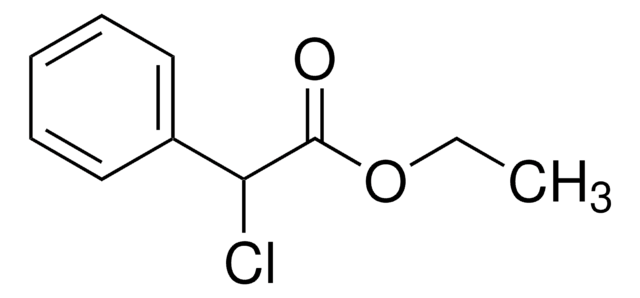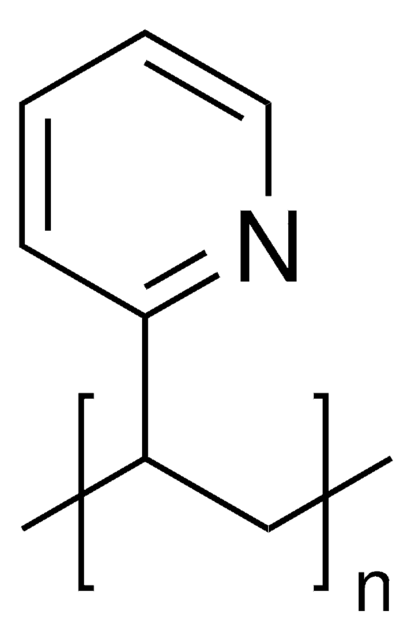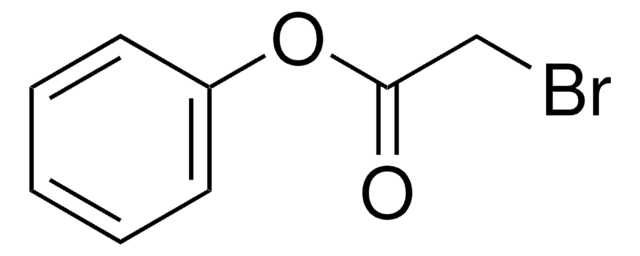554065
Ethyl α-bromophenylacetate
97%
Synonym(s):
α-Bromobenzeneacetic acid ethyl ester, α-Bromophenylacetic acid ethyl ester, 2-Bromo-2-phenylacetic acid ethyl ester, Ethyl (±)-α-bromobenzeneacetate, Ethyl 2-bromo-2-phenylacetate, Ethyl 2-bromophenylacetate
About This Item
Recommended Products
Assay
97%
refractive index
n20/D >1.5390 (lit.)
bp
89-92 °C/0.9 mmHg (lit.)
density
1.389 g/mL at 25 °C (lit.)
SMILES string
CCOC(=O)C(Br)c1ccccc1
InChI
1S/C10H11BrO2/c1-2-13-10(12)9(11)8-6-4-3-5-7-8/h3-7,9H,2H2,1H3
InChI key
BKTKLDMYHTUESO-UHFFFAOYSA-N
Related Categories
Application
EBPA may be used as an initiator for the following:
- polymerization of dimethyl(methacryloyloxymethyl) phosphonate
- polymerization of methyl methacrylate (MMA)
- polymerization of trimethylolpropane triacrylate(TMPTA)
Signal Word
Danger
Hazard Statements
Precautionary Statements
Hazard Classifications
Eye Dam. 1 - Skin Corr. 1B
Storage Class Code
8A - Combustible corrosive hazardous materials
WGK
WGK 3
Flash Point(F)
230.0 °F - closed cup
Flash Point(C)
110 °C - closed cup
Personal Protective Equipment
Certificates of Analysis (COA)
Search for Certificates of Analysis (COA) by entering the products Lot/Batch Number. Lot and Batch Numbers can be found on a product’s label following the words ‘Lot’ or ‘Batch’.
Already Own This Product?
Find documentation for the products that you have recently purchased in the Document Library.
Customers Also Viewed
Our team of scientists has experience in all areas of research including Life Science, Material Science, Chemical Synthesis, Chromatography, Analytical and many others.
Contact Technical Service


![Tris[2-(dimethylamino)ethyl]amine 97%](/deepweb/assets/sigmaaldrich/product/structures/695/792/ee0ff167-22a3-43a7-83a1-6c4908adf0ae/640/ee0ff167-22a3-43a7-83a1-6c4908adf0ae.png)











